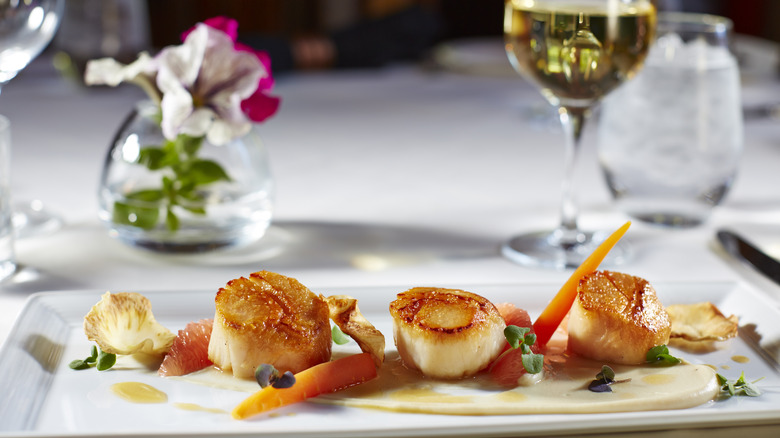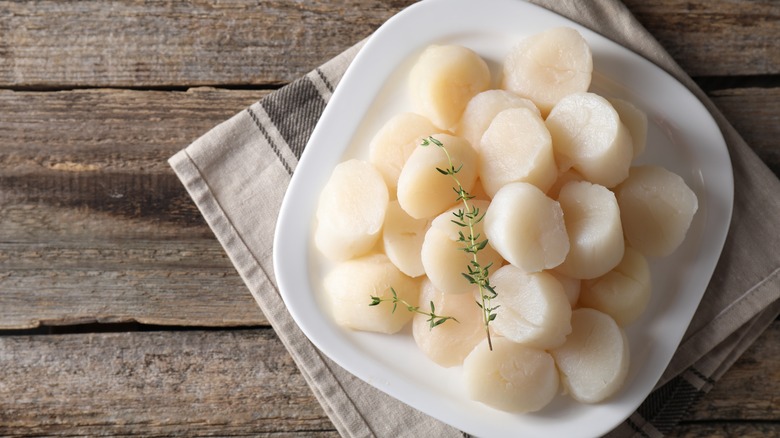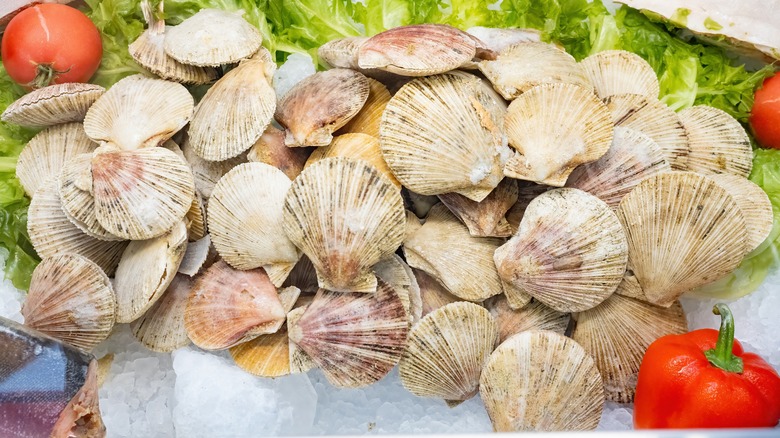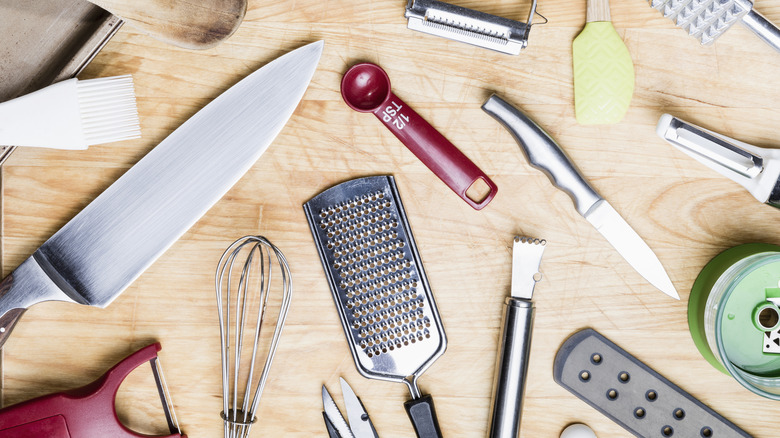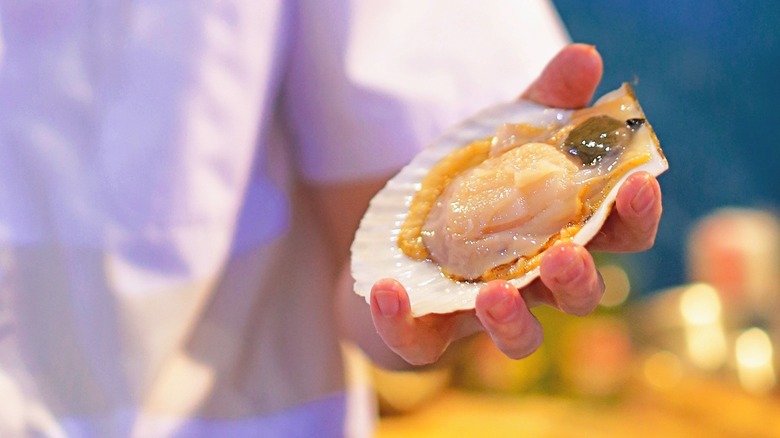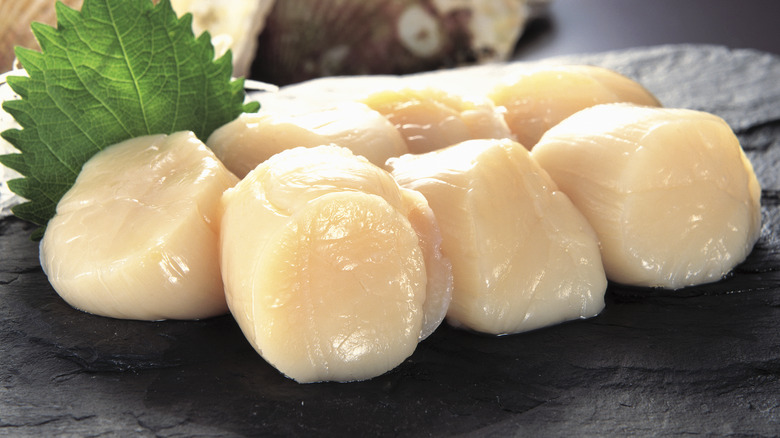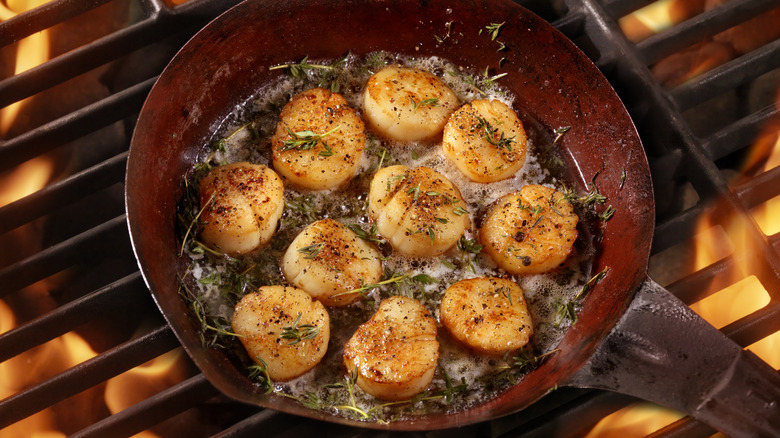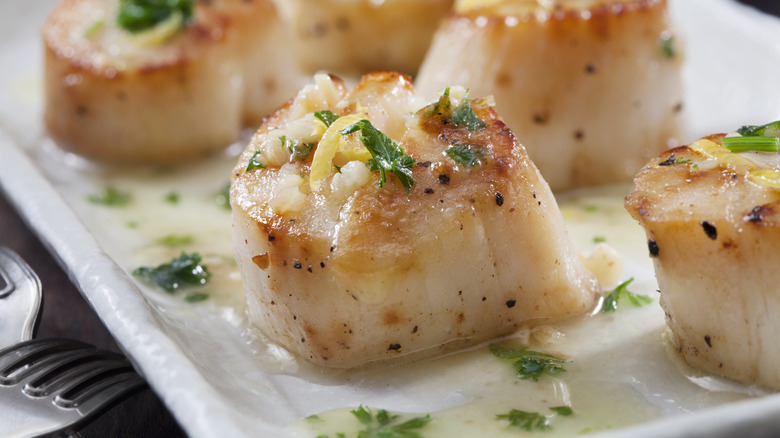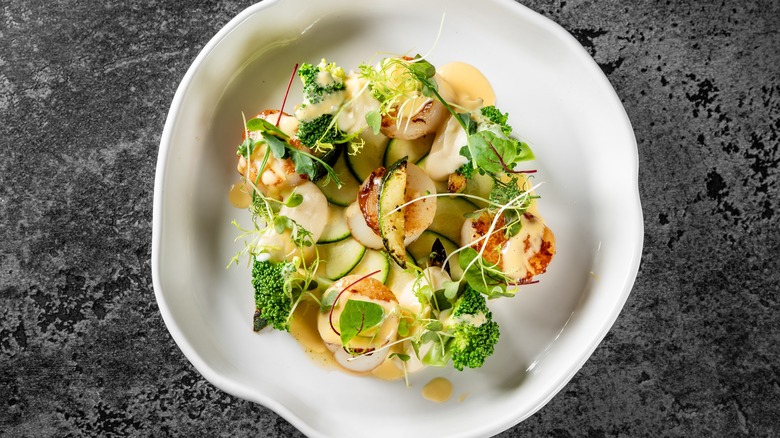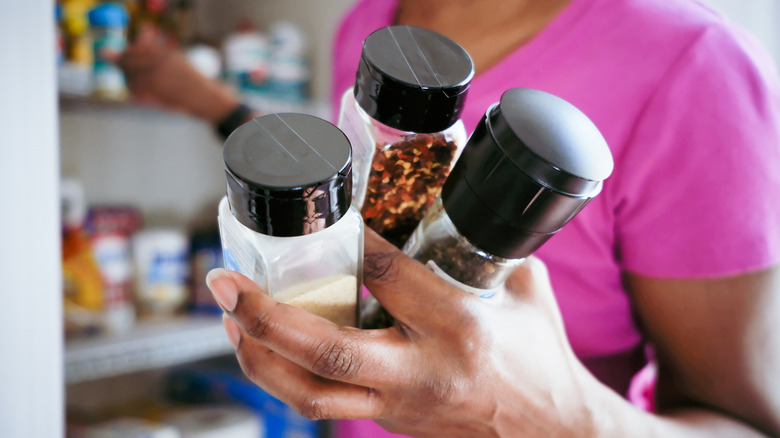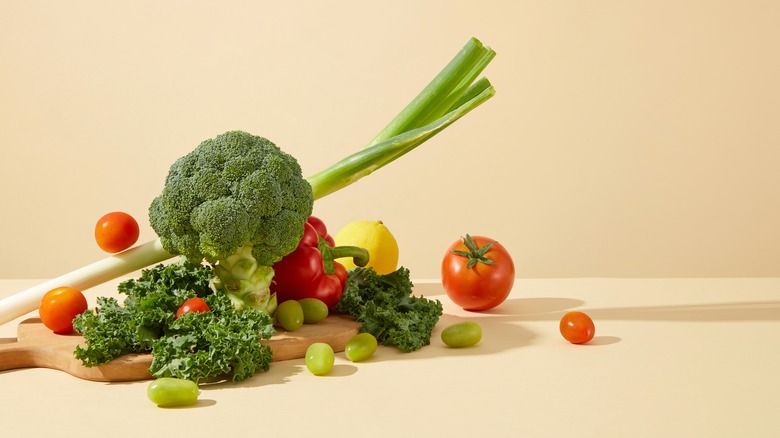Why Scallops Always Taste Better At A Restaurant, According To Seafood Experts
We may receive a commission on purchases made from links.
There's nothing quite like the first succulent, juicy bite of freshly prepared scallops when you're out at your favorite restaurant. This meaty shellfish is highly sought-after for its sweet, buttery, briny flavor that pairs well with plenty of recipes from vegetables to risotto — so it's no wonder you may want to experience it again and again.
But as much as you may want to, it can be hard to recreate the same delicious flavor in the comfort of your own home. If you're committed to learning how to properly prep, season, and cook scallops, the experts have some advice to help you achieve the same delicious finish as your favorite establishments. We asked Derick Wade, executive chef of The Darling Oyster Bar and Thomas Dritsas, corporate executive chef of Truluck's, for their professional recommendations to make scallops just like the pros. Read on to discover their top tips so you can achieve fine-dining quality in your own kitchen.
Sourcing high-quality scallops
"The biggest factor is always going to be freshness," explains Derick Wade. "After the scallop is harvested, they will continue to get smaller. Oftentimes, additives are put into scallops to retain their 'fattiness,' but you want to try to avoid these. Natural is always my preference." Thomas Dritsas agrees. "Consider purchasing from reputable fishmongers or markets known for high-quality seafood. Ask questions about the origin and handling of the scallops," he adds.
There are a few tell-tale signs of a fresh scallop. The meat should be firm and have a creamy, off-white color. There should not be a potent fishy smell, and instead they should have a mild, sweet aroma. If you can't find fresh scallops that fit the bill, consider looking in the frozen food section of your local grocery store. Like most fish, high-quality scallops are often frozen shortly after being caught, helping lock in that freshness until they're thawed and ready to use.
Understanding different varieties
While you might think "scallop" is one particular type of shellfish, it's actually an umbrella term that describes several different varieties — and knowing the differences can help you choose the best option for any particular dish. "Familiarize yourself with the types available, such as sea scallops and bay scallops," recommends Thomas Dritsas. "Sea scallops are larger and often preferred for their flavor and texture."
Bay scallops are found in shallow water and are usually the smallest variety. They're known for their sweet flavor and tender texture, but their small size can make them more difficult to handle. One major perk of bay scallops? The inconvenience of the smaller size usually makes them more affordable than the larger sea scallops.
Sea scallops, on the other hand, are caught in deeper water. While the texture is a bit chewier than bay scallops, they are delicious when quickly seared at a high heat. You can often find them served with dishes like risotto or pasta.
Access to the right tools
When it comes to matching restaurant quality in the comfort of your own kitchen, having all of the right tools is half the battle. Though cooking scallops isn't particularly specialized, there are a few gadgets and kitchen staples you'll want to have on hand to make the process a bit easier.
Derick Wade recommends adding kitchen tongs and basting spoons to your arsenal. "If you have a good set of tongs for flipping that aren't sharp enough to penetrate the scallop's skin, you're on a good track. Add a quality basting spoon to the mix, and you have the proper tools needed to achieve restaurant-quality scallops," he says.
Thomas Dritsas also recommends a heavy skillet like cast iron or stainless steel for cooking scallops. "These pans retain heat well and provide a good sear," he explains. This will give the scallops a desirable brown crust on the exterior.
Thorough cleaning
If you're buying scallops still in their shell, it's important to understand how to properly shuck, clean, and prepare them to be cooked. The first step is always to open them and give both the shell and the meat a thorough clean to rinse away any excess sand, dirt, and critters like crabs that may be hiding. Pro tip: Keeping your scallops iced will help them open more easily, saving you time and hassle (especially if you're preparing a large quantity).
Once you've freed the scallop of its shell, remove the scallop skirt and black stomach sac. While these pieces aren't typically used when cooking scallops, you can hang onto the skirt to make fish stock. Then, rinse the scallop meat in cold water and place it on a towel to dry. If you don't want to shuck your own scallops, don't worry — many fish mongers and grocery stores sell scallops ready-to-cook, so you can skip this prep step if preferred.
Prioritizing proper prep
To achieve restaurant-quality scallops at home, it isn't just about the cooking itself. A lot of the work happens before you even turn on the stovetop or oven. "Any water remaining on the scallop will affect the desired sear and overall cooking process," explains Derick Wade. "My tried and true method is to pat them dry roughly 45 minutes before cooking and then place them in the fridge to continue drying out until you're ready to cook."
Thomas Dritsas echoes the same recommendation: "Before cooking, make sure to thoroughly pat the scallops dry with paper towels. Excess moisture will prevent them from searing properly." To help draw out the moisture, add a generous coating of salt to your scallops once you remove them from the fridge. While you can let them sit for as little as 10 minutes, leaving them on a paper towel-lined plate overnight will draw out as much moisture as possible. Because of the minimal moisture, the result will be a crispy, delicious sear.
Precise cooking times
Like with any protein, delivering delicious, tender, and tasty scallops requires cooking them for just the right amount of time. But unlike steak or larger fish filets, the right cooking time for scallops can be difficult to nail down because of their smaller size. Thomas Dritsas, however, has a general guideline he always follows. "Cook them for only 2-3 minutes on each side. They should be opaque in the center but still tender," he says.
Once you add the scallops to a pan with oil or butter, let them sit. Moving or flipping them too frequently will prevent them from getting a delicious, crispy crust. "Despite the scallop size and length of time for cooking, the best rule of thumb is to get a hard sear on one side, flip, baste, and enjoy!" explains Derick Wade. If you prefer a more set-it-and-forget-it method, you can also bake scallops in the oven for anywhere from 15 to 30 minutes depending on the recipe.
Account for time to rest
Letting your scallops rest once they've cooked is just as important as the cooking method itself. During this process it helps the protein molecules relax so they can reabsorb moisture, making the meat more tender and juicier than if it was sliced or eaten right away. "Let them rest after cooking to allow the juices to redistribute," Thomas Dritsas notes.
If you see some moisture leaking out of your scallops while they rest, don't fret. This is a natural part of the process for any protein — and it doesn't mean that your scallops will dry out or lose flavor. Scallops — like all proteins — continue to cook a bit while resting, so be sure to pull them from the heat a bit before you reach your desired level of doneness. That way, you'll have the perfect tender texture by the time you plate and serve them.
Layers of flavor
While scallops taste delicious on their own, layering complex flavors in your dish will give you a more restaurant-like final product. Because of their mild flavor, scallops can be mixed and matched with countless spices, herbs, and ingredients to create beautifully complex dishes.
"The technique I use most frequently when cooking with scallops is getting a hard sear and then basting with butter, garlic, and thyme to build multiple layers of flavor and aroma to the finished dish," says Derick Wade. This classic flavor combo is one of Thomas Dritsas' favorites, too. "Butter and garlic: a classic combination," he says. "Sauté scallops in butter with minced garlic, and finish with a squeeze of lemon juice."
If you prefer a bit more heat to your meals, consider adding a spicy element for a more unexpected flavor. "If you're a heat-lover like me, add a dash of Calabrian chili pepper oil to really up the ante of the dish," adds Wade.
Taste and season as you go
One golden rule of cooking is to taste everything as you go to ensure the level of seasoning is just right in each component of your dish. While fresh scallops are delicious as-is, be sure to always taste-test and adjust accordingly.
"As a seafood enthusiast myself, I prefer to indulge in the way it is intended to be consumed: as is," says Derick Wade. "However, if you must season, a light [sprinkle of] Kosher salt — I use Diamond Crystal in my restaurant and at home — will amplify the scallop's inherent flavor."
Other popular options for pairing with scallops include fresh or dried herbs like tarragon, thyme, dill, and parsley. For something a bit punchier, opt for paprika, cumin, or even chili flakes. And for a unique twist, mix and match all of these spices and seasonings. You can also opt for a bright hit of citrus with lemon juice. Just be sure to taste often to ensure your combo works well with the scallops' subtle flavor.
Pair with seasonal sides
Properly preparing the scallops is important to producing a restaurant-quality meal, but don't overlook the elements you pair with them. "Rounding out the [scallop] dish with a seasonal puree, serving sauce, or risotto will result in a restaurant-style feel and presentation," says Derick Wade. "In the fall and winter, I always have sweet potatoes or butternut squash on hand. For a Southern spin, add a sorghum glaze finish which perfectly complements the nutty-earthiness of the puree's main ingredient."
For a spring-inspired meal, Wade recommends an asparagus and ramp puree, noting, "[it] not only tastes amazing but the bold color will almost certainly wow dinner guests." Summer flavors are best captured with light and herbaceous elements like a tomato-dill vinaigrette or other in-season herbs. Whichever route you choose to go with your sides, Wade has one major tip: "Be creative by experimenting with any seasonal vegetables [you] love and [don't] count out salty-sweet pairings."
